Lead Removal NJ



New Jersey’s Recent Lead Regulations
In 2021, Gov. Phil Murphy signed three bills into law to eliminate common sources of lead exposure in New Jersey.
One new law (S1147) targets lead dust and paint, the most common sources of lead exposure. It requires any rental home built before 1978 to be inspected and tested for lead.
The second law (A5343) required every community water system to replace every lead service line in its network within ten years.
The last law (A5407) lifts restrictions on special assessments and bond issuances linked to the replacement of residential lead service lines.
Lead Paint Hazards That Necessitate Our Lead Removal Services
In most cases, lead paint that’s in good condition does not pose a health hazard. However, during remodeling, renovations, or when lead paint starts to deteriorate, lead dust and paint chips become a hazard. If your lead paint is in one of the above conditions, you should contact a lead removal contractor like us for evaluation and remediation services.
Common sources for lead paint hazards that require remediation include:
- Chipping, cracking, chipping, or chalking of lead paint
- Lead paint on surfaces that experience excessive wear, including doors, door frames, windows, window sills, hardwood floors, stairs, stair rails, fences, or porches
- Lead paint on surfaces, which kids may come into contact with
- Lead in soil around houses or buildings
Other areas where lead paint can pose a significant risk include multi-family buildings, as any lead issue can be amplified due to the high number of people who could be potentially affected.
In addition, industrial activities may churn out lead or lead-by products that contaminate buildings, water, and soil. In such situations, lead paint removal is required to remove hazards.
At AAA Lead Professionals, we understand these common sources of contamination, and we are experienced in all kinds of lead abatement projects.

Our Lead Removal Process
Our team will decide the most effective way to remove lead, based on the info contained in the report. The lead removal process commences when they determine the course of action, and the process may involve:
- Enclosure – This entails covering a lead-based surface like walls with a new surface. Be warned if the new surface is ever removed, the lead paint will be accessible again, and your family or tenants will be exposed.
- Replacement – You may have doors, windows, molding, or other parts of the building that have been painted in lead paint. For this method, we replace these parts with a new lead-free alternative.
- Encapsulation – When we use this abatement method, we cover the surface containing lead with specialized paint. This usually seals in the lead paint and stops it from deteriorating. It’s worth noting that the specialized paint will wear eventually, and you will need a fresh coating.
- Paint removal – We may decide that getting rid of the lead-based paint is the most practical option for your circumstances. In such a situation, we will use different methods to eliminate it. At times, this involves electric sanding, wet hand scraping, or wire brushing. We always ensure we use a HEPA vacuum so that lead particles don’t spread all over your home or business premises in the process. When we have gotten rid of the paint, we will clean the surface to remove any remaining dust. At this point, we can repaint the surface with lead-free paint.
Note: All the debris gotten from the site is disposed of appropriately. Our debris collection and removal process meet certified hazardous good removal standards.
Costs for Lead Removal New Jersey Services
The cost of lead abatement varies depending on the type of abatement method used and the supposed coverage area. However, when you get in touch with us, we can provide you with a free estimate for your lead abatement work.
Service Areas For
Lead
- Atlantic County
- Bergen County
- Burlington County
- Camden County
- Cape May County
- Cumberland County
- Essex County
- Gloucester County
- Hudson County
- Hunterdon County
- Mercer County
- Middlesex County
- Monmouth County
- Morris County
- Ocean County
- Passaic County
- Salem County
- Somerset County
- Sussex County
- Union County
- Warren County
- And other areas in New Jersey state
Schedule Your Free Consultation Today!
If your building was constructed before 1978, it is likely that there are lead-based paint dangers in your ceilings, walls, doors, windows, or exterior finishes. At AAA Lead Professionals, we have helped many residential homes, schools, hospitals, child-care facilities, and consumer product manufacturing industries alleviate their lead issues. Get in touch today for a free estimate!
Testimonials

















